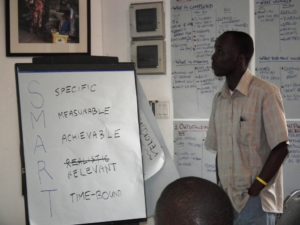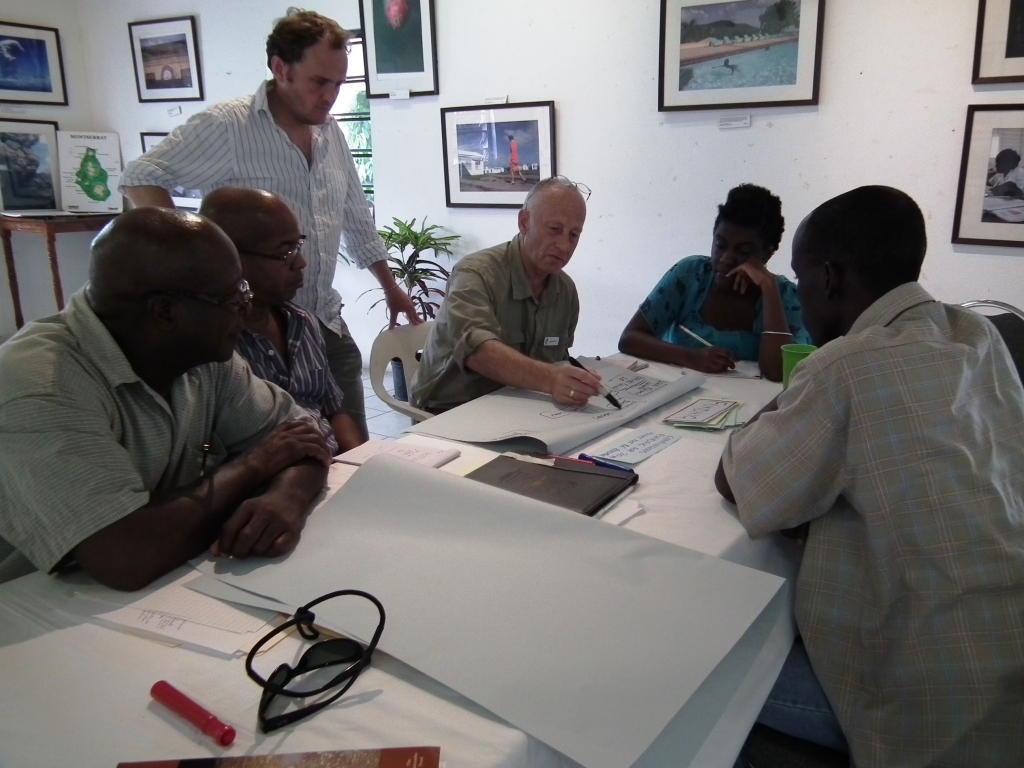Yesterday was the first day of the Mountain Chicken Recovery Plan workshop and the aim was to update everyone attending on all work conducted on the mountain chicken over the past 16 years. After five informative presentations participants were asked to write their own ideal vision of what state the mountain chicken species should be in the future. The aim of a vision is to give us a long term ideal state to aim for and to be inspirational to those involved in working with the species.
Day two began with voting on the vision for the mountain chicken and after much debate the following vision was chosen:
“To have healthy populations of mountain chickens, which is a flagship species for the islands’ natural and cultural heritage”

In addition to a vision the recovery plan also needs a ‘goal’. The purpose of a goal is to be more SMART (Specific, measurable, achievable, relevant and time bound) than the vision and to give the plan more structure and make it more tangible. So the next activity was to split participants into three working groups to compile a SMART goal which would fit under the plans new vision statement. After the presentations of the three goals and some discussion and editing the goal for the plan was confirmed as:
“Healthy mountain chicken populations across their former year 2000 ranges on each of Montserrat and Dominica”
One of the key decisions to come out of the discussions surrounding the goal was the time span of the plan. Typically this type of recovery plan for a species is developed with the aim to be completed within 5-10 years. However, the majority of the participants agreed that this time frame was too short when discussing the recovery of the mountain chicken taking into account the number of challenges facing the species. Therefore, it was agreed that the time frame for this recovery plan would instead be 20 years. This was an important decision made by the group as it demonstrated local and international understanding of the challenges facing the mountain chicken and also the longer-term commitment by the participants to species for such a long period of time and was undoubtedly a step in the right direction for the frogs.

The day finished with the creation of problem trees. These are chains of problems that might prevent our conservation efforts from achieving our goal and therefore our vision. People were given time to come up with all possible problems facing the mountain chickens (we filled an entire wall!) and then group them into chains. We did this by dividing the problems into themes which were then allocated to different groups. The groups created the chains and then presented them back to the main group.
Tomorrow will be very important as we will be coming up with objectives for the plan to tackle the different problem themed areas and looking at what activities are going to be necessary in the future to achieve our objectives and ultimately, our goal!
By Sarah-Louise Adams, Project Coordinator






